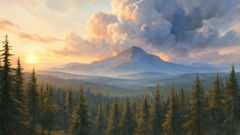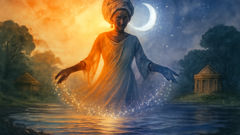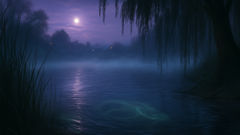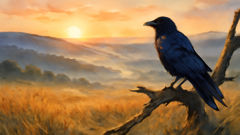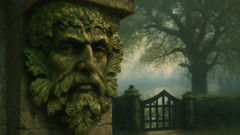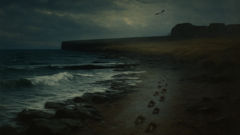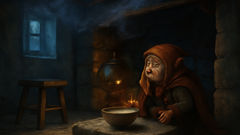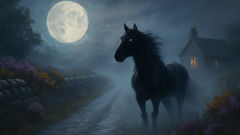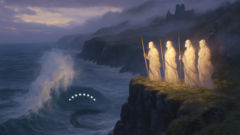Introduction
Deep in the labyrinthine waterways and emerald tangles of the Congo River Basin, time slows to the hush of unseen wings and the whisper of water slipping over roots. Here, the air is thick with secrets, every shadow might hold a story, and the pulse of ancient rhythms can still be felt beneath the modern world’s clamor. For centuries, the people who call this region home have spoken of a creature older than memory, a living echo of a time when giants roamed the earth—a creature they call Mokele-mbembe. Descriptions passed down in song and smoke-lit tales describe it as a beast as long as two canoes, with a serpent’s neck, an elephant’s body, and eyes that catch the dawn’s first light. Some say it guards sacred places, others that it is a spirit of the river, a reminder that not all wonders have been explained away. Its legend has drawn explorers, scientists, and dreamers from distant continents, each hoping to catch a glimpse of what the world insists cannot be. Yet, for the people of the basin—the Bantu, the BaAka, the fishermen and forest dwellers—Mokele-mbembe is not merely a curiosity or a cryptid. It is woven into their fears, their hopes, their cautionary tales for children who stray too close to the riverbanks. The story of the Mokele-mbembe is a living thing, carried on the river’s breath and the beating of jungle drums. As the world’s great forests shrink and ancient mysteries yield to satellites and cell towers, this legend endures—its truth as elusive and as necessary as the beast itself. To journey into the Congo in search of the Mokele-mbembe is to walk the edge between myth and reality, to listen for truths that do not always take the shape of bones or footprints, but can be found in the spaces between fear and wonder.
The Keeper of Forgotten Waters
To many, the Congo River Basin is just an expanse of mystery on a map—a great green scar running through the heart of Africa, bordered by wild names and denser shadows. But for Ngoli, a boy of the Bantu village of Likouala, it is home. He knows the moods of the river, the call of the fish eagles at dusk, the secret trails through papyrus marshes where hippos wallow and crocodiles drift like sunken logs. His mother, Amba, is the village’s storyteller, the one whose voice threads through moonlit gatherings with tales of forest spirits and river beasts. Of all her stories, none fascinates Ngoli more than that of the Mokele-mbembe.
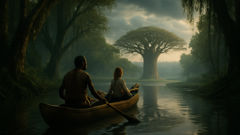
She would tell him how, when she was a child, she saw footprints in the mud wider than her father’s shoulders, leading away from a half-eaten fig tree. Old men remembered nights when something huge would crash through the shallows, leaving only swirling eddies behind. “Respect the river,” Amba always finished, “for Mokele-mbembe keeps it safe—and sometimes, it keeps us away from what we should not find.”
Ngoli’s fascination grew into obsession. When he was old enough to paddle alone, he spent long hours drifting in his dugout canoe, listening for the sound of something more than wind and water. He learned which birds grew silent when danger was near, and how even crocodiles avoided certain bends in the river. But years passed, and the only monsters he found were the ones his mind conjured in the slow dusk hours.
Then, one sticky morning during the long rains, a stranger arrived in Likouala. She was tall, with skin the color of river mud and hair pulled into a tight braid. Her name was Dr. Elise Laurent, a biologist from Kinshasa who spoke the local Lingala clumsily but smiled easily. She brought with her crates of equipment, notebooks filled with sketches, and a hunger for discovery. Elise had read the colonial reports, listened to local guides, and poured over sketches from past expeditions. Every account of the Mokele-mbembe, she believed, was a puzzle piece—perhaps pointing not to a literal dinosaur, but to some unknown survivor of the region’s wild abundance.
The village elders were wary of outsiders. They remembered men with cameras and guns who left behind only confusion and broken promises. But Amba saw something kindred in Elise—a respect for stories, a willingness to listen. She invited Elise to her fire, where tales of the Mokele-mbembe spilled out amid the scent of roasting yams and woodsmoke. Elise listened and took notes, careful not to challenge, but always asking: “Have you seen it? Do you believe it lives?”
Ngoli found himself drawn to her curiosity. He offered to show her the secret places where the river bent back on itself and the water grew deep and still. Together, they navigated labyrinthine channels, pushing through curtains of hanging vines and gliding past sleeping crocodiles. With each journey, Ngoli’s understanding grew: perhaps, he thought, belief itself was a kind of seeing. Elise taught him how to read animal tracks, how to listen for the way frogs fell silent when something massive moved beneath the surface. In return, he taught her which plants could heal a cut or soothe a fever.
One evening, as a thunderstorm loomed and lightning forked above the trees, Ngoli and Elise found themselves drifting near an old baobab tree—one rumored to mark the territory of the Mokele-mbembe. The air was electric; the river, swollen and brown, flowed swift and silent. Suddenly, Elise pointed to a line of bubbles stretching from the bank. The water bulged, then something vast and gray broke the surface—a back like a rolling hill, then a glimpse of a serpentine neck before it slipped away. For a moment, time froze. Elise fumbled for her camera, but all that remained was a vanishing ripple and the stunned silence of two witnesses changed forever.
That night, word spread through Likouala. Some scoffed, others whispered prayers. Elise’s camera had failed to capture the creature, but her notebook now brimmed with new urgency. She and Ngoli became partners—he, the bridge between worlds; she, the seeker of truth where myth and reality blur.
Where Legend Meets Science
In the weeks that followed their encounter, Ngoli and Elise became inseparable. The river, once an endless thread of green mystery, opened itself in new ways to their partnership. Ngoli’s ears were attuned to the language of the forest—the distant cough of leopards, the warning chatter of monkeys, the subtle hush that descended whenever something enormous moved through the undergrowth. Elise’s world was that of observation and deduction. She cataloged water samples, set up motion-activated cameras, and mapped every story she heard from villagers onto hand-drawn charts. But as much as she trusted science, she couldn’t dismiss the shiver that ran down her spine whenever Ngoli’s tales grew especially vivid.
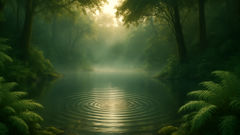
Their search drew them deeper into the basin, far beyond the reaches of cell towers and well-trodden footpaths. The nights grew longer, the calls of the jungle more insistent. Sometimes, as they lay beside the embers of their campfire, Ngoli would ask questions that had no easy answers: “Why does Mokele-mbembe hide from us? What if it is not an animal, but a spirit? Can we hurt it just by looking for it?” Elise’s answers were thoughtful but incomplete. She believed in discovery, but she was learning to respect the boundaries of wonder.
Rumors spread that the white scientists from the city were paying handsomely for proof of the beast. Men from other villages arrived with crude traps and rifles, eager for glory or reward. Ngoli grew uneasy—he’d heard stories of sacred places defiled by greed. Elise, too, was wary. She insisted that their expedition disturb as little as possible: no fires near nesting banks, no loud voices at dawn. Together, they tried to honor the pact between human and river.
One night, when the moon was full and the air hummed with insects, Ngoli and Elise heard a sound like nothing they’d ever known—a deep, mournful bellow echoing across the water. The villagers said it was Mokele-mbembe warning intruders away. Elise’s rational mind suggested a hippo or an elephant, but her heart was less certain. They found fresh tracks the next morning—impossibly large, pressed deep into the mud where no known creature had passed in decades. Elise’s camera, once again, captured only shadows and hints. The river did not yield its secrets easily.
As the rainy season reached its peak, challenges mounted. Food grew scarce, their canoe nearly capsized in a flash flood, and malaria struck one of their guides. Ngoli watched Elise’s determination harden into resolve. “You must promise,” he said as she recovered under the watchful eyes of Amba, “that you’ll tell the story as it is, not just what you can prove.” Elise promised, writing feverishly in her journal: not just data, but sensations—the feel of the mist on her skin, the way the jungle pulsed with unseen life.
In their final days by the river, Ngoli and Elise encountered a group of elders who spoke in hushed tones about the sacred lagoon—the true heart of Mokele-mbembe’s realm. The path was treacherous, overgrown and haunted by the memory of lost hunters. But the elders gave their blessing, and Ngoli led Elise through corridors of tangled lianas and across mudflats where pygmy kingfishers darted like living jewels. At last, they came to a still pool ringed by giant ferns. The air was thick with anticipation. As dawn broke, the water shivered—and in that trembling moment, both human and creature seemed to sense each other’s presence. Ngoli saw only a swirl of enormous shape beneath the surface, a wake that rippled outwards in silent greeting. Elise did not reach for her camera. Instead, she closed her eyes, letting the story settle inside her—wordless, sacred, alive.
Conclusion
Long after Elise returned to Kinshasa and Ngoli resumed his life among the winding channels of Likouala, the legend of the Mokele-mbembe endured. It thrived in the spaces between scientific report and whispered tale, in old women’s songs and wide-eyed children’s questions. For some, it became proof that not every mystery must be solved—that some wonders are worth protecting simply because they inspire awe. For others, it was a challenge: to seek, to observe, but never to conquer. Elise published her findings, careful to honor what she could not explain. Her journals spoke not just of footprints or ripples, but of respect for cultures that see the river as a living soul, and for creatures—real or imagined—that remind us of how little we truly know. Ngoli grew into a storyteller himself, weaving his own memories with those of his ancestors, teaching new generations that the line between myth and reality is not a wall but a river—forever winding, forever mysterious. And so the myth of the Mokele-mbembe lived on, a guardian spirit watching over waters both seen and unseen, a reminder that in the heart of the Congo, wonder is never far away.



